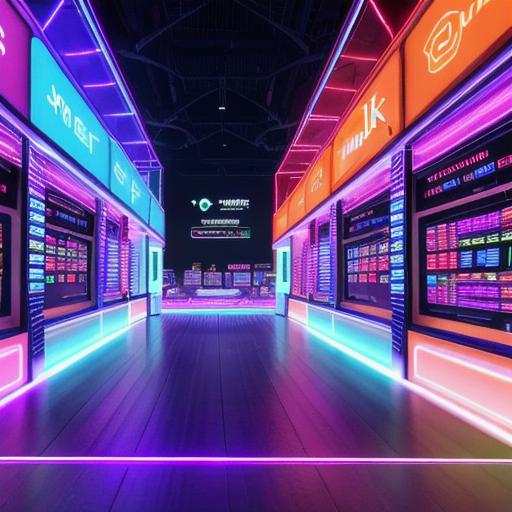Introduction:

In recent years, we have seen a significant shift towards decentralized computing and digital assets, driven by advancements in blockchain technology. One of the emerging trends is the intersection of Web3 and Metaverse, two concepts that are poised to revolutionize how we interact with digital content and each other. In this article, we will explore the intersection of these two concepts, their benefits, and what the future holds for decentralized computing.
What is Web3?
Web3 refers to the next generation of the internet, which is built on decentralized technologies such as blockchain, smart contracts, and distributed ledger technology (DLT). The goal of Web3 is to create a more secure, transparent, and democratized digital environment that empowers individuals and organizations to control their own data and assets.
What is Metaverse?

Metaverse refers to a virtual world where users can interact with each other and digital content in a seamless and immersive way. The Metaverse is built on decentralized technologies such as blockchain, augmented reality (AR), and virtual reality (VR). It enables users to create, share, and monetize their own content without the need for intermediaries such as social media platforms or video streaming services.
The Intersection of Web3 and Metaverse:
The intersection of Web3 and Metaverse refers to the convergence of these two concepts, where decentralized technologies are used to create a more secure, transparent, and democratized virtual world. This enables users to have full control over their data and assets, while also enabling them to interact with each other and digital content in a seamless and immersive way.
Benefits of Web3 and Metaverse:
- Security: Decentralized technologies such as blockchain and DLT provide a more secure environment for storing and sharing data, reducing the risk of hacking and data breaches.
- Transparency: The use of decentralized technologies enables users to have full control over their data, ensuring that it is transparent and cannot be manipulated by third parties.
- Democracy: Decentralized technologies enable individuals and organizations to have a say in how digital content and assets are created, shared, and monetized.
- Immersive Experience: The Metaverse enables users to interact with each other and digital content in a seamless and immersive way, providing a more engaging and interactive experience.
Real-life Examples:
- Decentralized Finance (DeFi): DeFi is an example of the intersection of Web3 and Metaverse, where decentralized technologies are used to create a secure, transparent, and democratized financial system that enables users to have full control over their assets.
- Non-Fungible Tokens (NFTs): NFTs are another example of the intersection of Web3 and Metaverse, where decentralized technologies are used to create unique digital assets that can be bought, sold, and traded on blockchain-based platforms.
The Future of Decentralized Computing:
The intersection of Web3 and Metaverse is poised to revolutionize how we interact with digital content and each other. As more users adopt decentralized technologies, we will see the rise of a more secure, transparent, and democratized digital environment that empowers individuals and organizations to control their own data and assets.
FAQs:
Q: What is Web3?
A: Web3 refers to the next generation of the internet, which is built on decentralized technologies such as blockchain, smart contracts, and distributed ledger technology (DLT).
Q: What is Metaverse?
A: Metaverse refers to a virtual world where users can interact with each other and digital content in a seamless and immersive way.
Q: How does Web3 and Metaverse intersect?
A: The intersection of Web3 and Metaverse refers to the convergence of these two concepts, where decentralized technologies are used to create a more secure, transparent, and democratized virtual world.
Conclusion:
In conclusion, the intersection of Web3 and Metaverse is poised to revolutionize how we interact with digital content and each other. As more users adopt decentralized technologies, we will see the rise of a more secure, transparent, and
